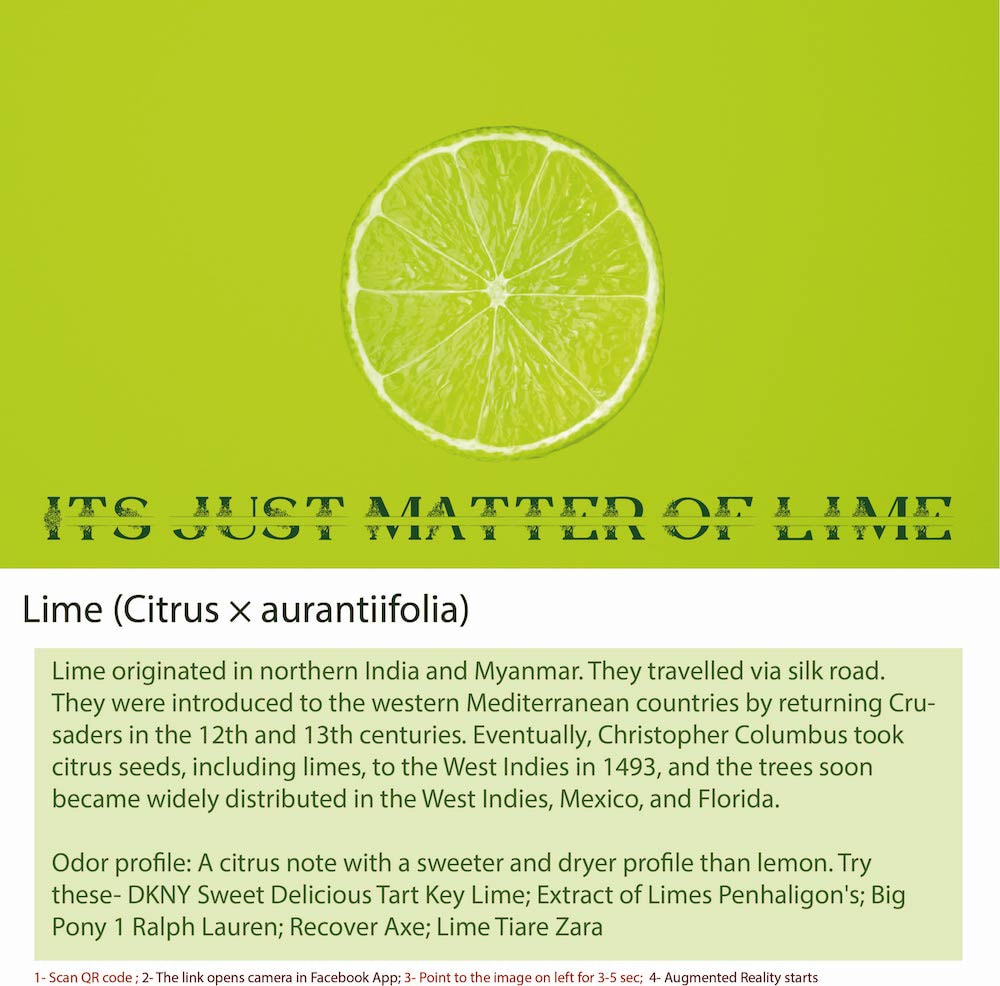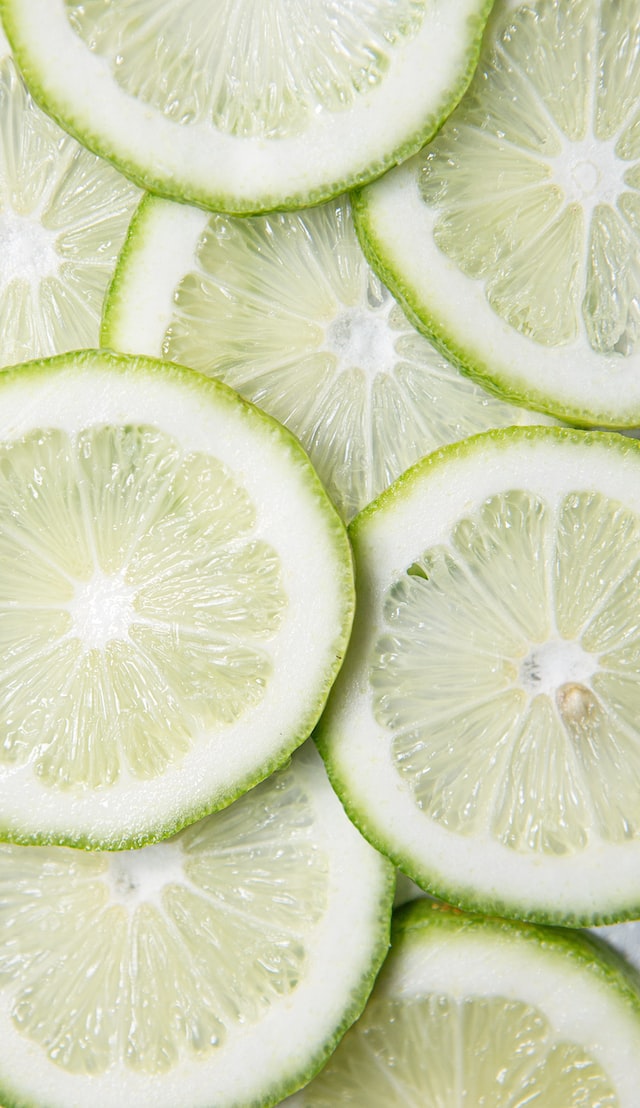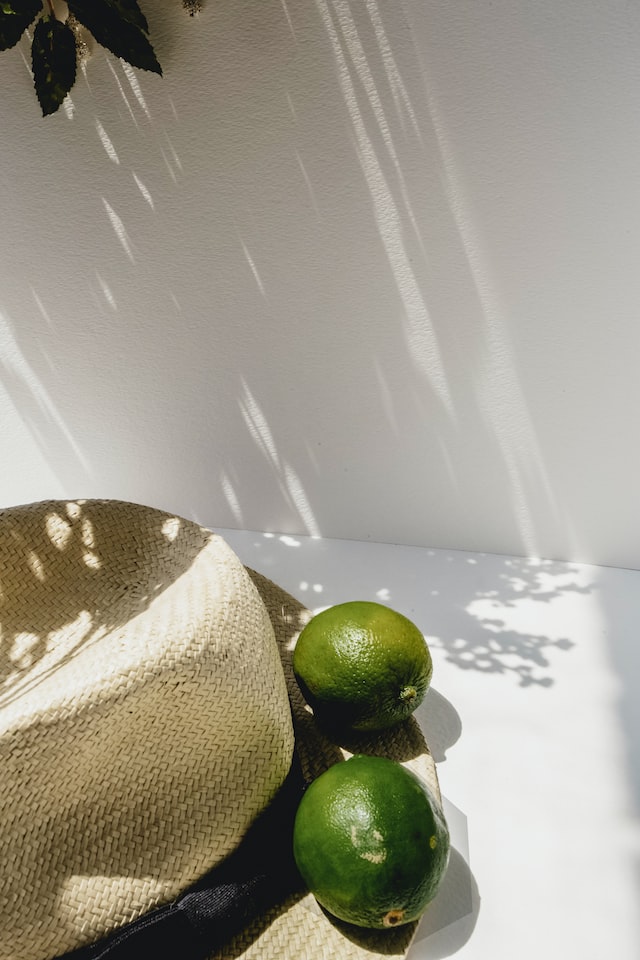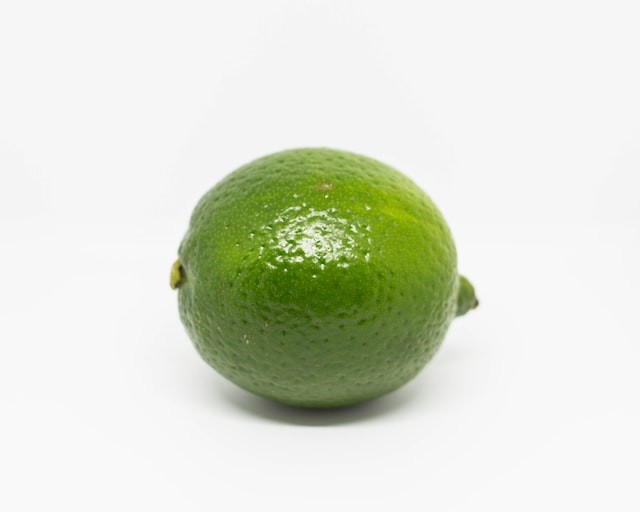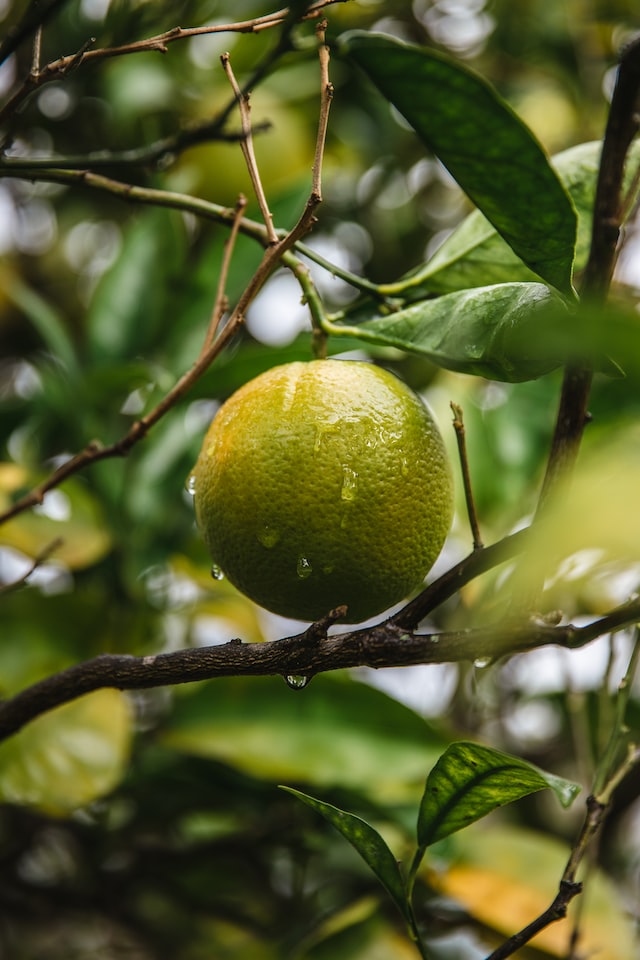Harnessing the Power of Lime Aromatherapy
Lime: The Zesty Citrus Gem with Multifaceted Delights
Introduction: Lime, with its vibrant green color and zesty aroma, is a versatile and beloved citrus fruit that has played a significant role in various aspects of human life. Its refreshing fragrance has inspired perfumers, while its therapeutic essential oil is valued in aromatherapy. Lime's tangy flavor has made it a staple in culinary delights worldwide. Moreover, lime's medicinal applications and historical significance in food and culture make it an intriguing and multifaceted gem in the citrus family. This essay explores the captivating world of lime, encompassing its presence in perfumes, therapeutic oils, food, medicine, and uncovering some fascinating and fun facts about this delightful citrus fruit.
Historical Significance and Culinary Heritage: Lime has a rich history, believed to have originated in Southeast Asia and later spread to other regions through trade routes. Ancient civilizations, including the Egyptians and Greeks, valued limes for their medicinal properties and culinary use. Limes played a crucial role in preventing scurvy among sailors during long sea voyages, leading to its association with sailors and the British Navy. Today, lime is a culinary staple in many cuisines, adding a burst of flavor and acidity to dishes, beverages, and desserts.
Perfumes and Fragrance: Lime's invigorating and uplifting fragrance has found its way into the world of perfumery. Lime oil, extracted from the fruit's peel, is used to create citrusy and fresh scents. As a top note, lime adds a zesty and sparkling quality to fragrances, making it a popular choice in summer and daytime perfumes. Lime's aromatic essence can evoke feelings of energy and vitality, making it a favored ingredient in various perfume compositions.
Therapeutic Oils and Aromatherapy: Lime essential oil is highly valued in aromatherapy for its potential therapeutic properties. Its refreshing and uplifting aroma is believed to help reduce stress, anxiety, and mental fatigue. Lime oil's vibrant fragrance can promote a sense of clarity and focus, making it an excellent choice for diffusing in workspaces or during meditation. Additionally, lime essential oil possesses antiseptic and astringent properties, making it useful in skincare products and for promoting healthy skin.
Culinary Delights: Lime's tangy and citrusy flavor is a culinary delight that adds a refreshing twist to dishes and beverages. In cuisines worldwide, lime is used to enhance the taste of savory dishes, such as salads, curries, and seafood preparations. Lime juice is a common ingredient in refreshing beverages, including limeade, margaritas, and mojitos. In desserts, lime zest and juice are used to create delicious lime pies, tarts, and sorbets.
Medicinal Applications: Lime's nutritional value and high vitamin C content have made it a valuable fruit in supporting the immune system and preventing scurvy. Lime juice has been used traditionally to soothe sore throats and alleviate digestive discomfort. Additionally, lime's essential oil is occasionally used in traditional medicine for its potential benefits in relieving headaches and promoting mental clarity.
Fun and Crazy Facts:
Lime, with its zesty fragrance, tangy flavor, and multifaceted delights, has enriched human experiences in perfumery, aromatherapy, culinary arts, and traditional medicine. From its historical significance in preventing scurvy to its contemporary presence in diverse dishes and beverages, lime's versatility is a testament to its enduring popularity. Whether enjoyed in a refreshing drink, used to add a citrusy twist to a fragrance, or employed in aromatherapy to uplift the spirit, lime's vibrant and tangy essence continues to be cherished worldwide. As we savor the zesty gems of the citrus family, we are reminded of nature's bountiful gifts and the delightful ways they brighten our lives.
Introduction: Lime, with its vibrant green color and zesty aroma, is a versatile and beloved citrus fruit that has played a significant role in various aspects of human life. Its refreshing fragrance has inspired perfumers, while its therapeutic essential oil is valued in aromatherapy. Lime's tangy flavor has made it a staple in culinary delights worldwide. Moreover, lime's medicinal applications and historical significance in food and culture make it an intriguing and multifaceted gem in the citrus family. This essay explores the captivating world of lime, encompassing its presence in perfumes, therapeutic oils, food, medicine, and uncovering some fascinating and fun facts about this delightful citrus fruit.
Historical Significance and Culinary Heritage: Lime has a rich history, believed to have originated in Southeast Asia and later spread to other regions through trade routes. Ancient civilizations, including the Egyptians and Greeks, valued limes for their medicinal properties and culinary use. Limes played a crucial role in preventing scurvy among sailors during long sea voyages, leading to its association with sailors and the British Navy. Today, lime is a culinary staple in many cuisines, adding a burst of flavor and acidity to dishes, beverages, and desserts.
Perfumes and Fragrance: Lime's invigorating and uplifting fragrance has found its way into the world of perfumery. Lime oil, extracted from the fruit's peel, is used to create citrusy and fresh scents. As a top note, lime adds a zesty and sparkling quality to fragrances, making it a popular choice in summer and daytime perfumes. Lime's aromatic essence can evoke feelings of energy and vitality, making it a favored ingredient in various perfume compositions.
Therapeutic Oils and Aromatherapy: Lime essential oil is highly valued in aromatherapy for its potential therapeutic properties. Its refreshing and uplifting aroma is believed to help reduce stress, anxiety, and mental fatigue. Lime oil's vibrant fragrance can promote a sense of clarity and focus, making it an excellent choice for diffusing in workspaces or during meditation. Additionally, lime essential oil possesses antiseptic and astringent properties, making it useful in skincare products and for promoting healthy skin.
Culinary Delights: Lime's tangy and citrusy flavor is a culinary delight that adds a refreshing twist to dishes and beverages. In cuisines worldwide, lime is used to enhance the taste of savory dishes, such as salads, curries, and seafood preparations. Lime juice is a common ingredient in refreshing beverages, including limeade, margaritas, and mojitos. In desserts, lime zest and juice are used to create delicious lime pies, tarts, and sorbets.
Medicinal Applications: Lime's nutritional value and high vitamin C content have made it a valuable fruit in supporting the immune system and preventing scurvy. Lime juice has been used traditionally to soothe sore throats and alleviate digestive discomfort. Additionally, lime's essential oil is occasionally used in traditional medicine for its potential benefits in relieving headaches and promoting mental clarity.
Fun and Crazy Facts:
- Historical Scurvy Remedy: British sailors were nicknamed "limeys" due to their practice of consuming lime juice to prevent scurvy during long sea voyages.
- Lime in Perfume History: Limes were a cherished ingredient in the original formulation of the famous "4711 Eau de Cologne" launched in 1792.
- Versatility in Cocktails: Limes are a staple in numerous classic cocktails, including the iconic "Daiquiri," "Gimlet," and "Mojito."
- Preservation Power: In cooking, lime juice acts as a natural preservative due to its acidity, extending the shelf life of some dishes.
- Agricultural Diplomacy: In the 1860s, the United States and Mexico signed the "Treaty of La Mesilla" to define the border between the two nations. The treaty is sometimes humorously referred to as the "Gadsden Purchase" or the "Lime Purchase" because the U.S. paid $10 million for the area, which was equal to the annual U.S. lime consumption at the time.
Lime, with its zesty fragrance, tangy flavor, and multifaceted delights, has enriched human experiences in perfumery, aromatherapy, culinary arts, and traditional medicine. From its historical significance in preventing scurvy to its contemporary presence in diverse dishes and beverages, lime's versatility is a testament to its enduring popularity. Whether enjoyed in a refreshing drink, used to add a citrusy twist to a fragrance, or employed in aromatherapy to uplift the spirit, lime's vibrant and tangy essence continues to be cherished worldwide. As we savor the zesty gems of the citrus family, we are reminded of nature's bountiful gifts and the delightful ways they brighten our lives.
To experience augmented reality, please open the Facebook-app using QR code and point to the image below
Creating a Productive Atmosphere with Citrus Fragrances
Lime is a small citrus fruit that is closely related to the lemon. It is typically green in color and has a sour, acidic taste. Lime is used in a wide variety of culinary dishes, including marinades, sauces, and drinks, and it is also used to add flavor to many different types of cuisine, including Mexican, Thai, and Indian dishes.
Lime is rich in Vitamin C, which is a powerful antioxidant that helps to boost the immune system and protect against infections. Lime also contains other important nutrients such as Vitamin A, calcium, and potassium.
In addition to its culinary uses, lime is also used in many other ways. Lime juice is often used as a natural cleaning agent, and it is also used in the production of certain types of plastics and in water treatment. Lime is also used in agriculture as a soil conditioner and to control pests and diseases.
Lime essential oil is also popular in aromatherapy and perfumery, it's known for its refreshing, uplifting and energizing properties.
In summary, lime is a small citrus fruit that is closely related to the lemon and has a sour, acidic taste. It is used in a wide variety of culinary dishes and it is also rich in Vitamin C and other important nutrients. Lime is also used in many other ways, such as in cleaning, agriculture and in the production of certain types of plastics and in water treatment. Lime essential oil is also popular in aromatherapy and perfumery for its refreshing and uplifting properties.
Lime is rich in Vitamin C, which is a powerful antioxidant that helps to boost the immune system and protect against infections. Lime also contains other important nutrients such as Vitamin A, calcium, and potassium.
In addition to its culinary uses, lime is also used in many other ways. Lime juice is often used as a natural cleaning agent, and it is also used in the production of certain types of plastics and in water treatment. Lime is also used in agriculture as a soil conditioner and to control pests and diseases.
Lime essential oil is also popular in aromatherapy and perfumery, it's known for its refreshing, uplifting and energizing properties.
In summary, lime is a small citrus fruit that is closely related to the lemon and has a sour, acidic taste. It is used in a wide variety of culinary dishes and it is also rich in Vitamin C and other important nutrients. Lime is also used in many other ways, such as in cleaning, agriculture and in the production of certain types of plastics and in water treatment. Lime essential oil is also popular in aromatherapy and perfumery for its refreshing and uplifting properties.
Exploring the Benefits of Lime Scent for Workspaces
Some fun facts about lime:
- The word "lime" comes from the Old English word "līm," which means "lemon."
- Limes are believed to have originated in Southeast Asia and have been cultivated for over 2,500 years.
- Lime trees are evergreen and can reach up to 30 feet in height.
- Lime fruit is usually green, but some varieties can be yellow or orange.
- Lime trees are sensitive to cold temperatures and can only be grown in warm climates.
- Lime juice is a popular ingredient in many cocktails, including the Margarita and the Daiquiri.
- Limes are often used in cooking to add a tangy, acidic flavor to dishes.
- Lime zest, the outermost layer of the lime peel, is often used as a garnish or in baking to add a zesty, citrusy flavor to desserts.
- Lime trees are also used in traditional medicine to treat various ailments, such as scurvy, a disease caused by a deficiency of Vitamin C.
- Lime is considered as a symbol of friendship, love, and loyalty in many cultures, for example, in Mexico, it's traditional to give a lime as a token of friendship.
Scentopia Singapore: Your Source for Workplace Aromatherapy"
The history of lime breeding is believed to have originated in Southeast Asia, specifically in the region of present-day Myanmar and northeastern India. Lime trees were likely first cultivated for their fruit in this region more than 2,500 years ago. From there, the lime spread to other parts of Asia, including China and the Middle East, and eventually to the Mediterranean region and Europe.
In the centuries that followed, lime breeding efforts focused on creating new varieties with larger fruit, better flavor, and improved disease resistance. The lime was introduced to the Americas by Christopher Columbus in 1493, and by the 18th century, lime cultivation had spread throughout the Caribbean and Central and South America.
In the 19th century, lime breeding efforts shifted to Europe, where researchers began to focus on creating new varieties with improved fruit quality, disease resistance, and adaptability to different climates.
Today, lime is grown in many parts of the world, including Southeast Asia, China, Mexico, the Mediterranean, the Caribbean, Central and South America, and the United States. The main continents that lime is grown are Asia, North, Central and South America, Europe, Africa and Oceania.
In summary, lime breeding originated in Southeast Asia more than 2,500 years ago, and since then it has been spread to many parts of the world, with breeding efforts focused on creating new varieties with larger fruit, better flavor, and improved disease resistance. Today, lime is grown in many parts of the world, including Asia, North, Central and South America, Europe, Africa, and Oceania.
In the centuries that followed, lime breeding efforts focused on creating new varieties with larger fruit, better flavor, and improved disease resistance. The lime was introduced to the Americas by Christopher Columbus in 1493, and by the 18th century, lime cultivation had spread throughout the Caribbean and Central and South America.
In the 19th century, lime breeding efforts shifted to Europe, where researchers began to focus on creating new varieties with improved fruit quality, disease resistance, and adaptability to different climates.
Today, lime is grown in many parts of the world, including Southeast Asia, China, Mexico, the Mediterranean, the Caribbean, Central and South America, and the United States. The main continents that lime is grown are Asia, North, Central and South America, Europe, Africa and Oceania.
In summary, lime breeding originated in Southeast Asia more than 2,500 years ago, and since then it has been spread to many parts of the world, with breeding efforts focused on creating new varieties with larger fruit, better flavor, and improved disease resistance. Today, lime is grown in many parts of the world, including Asia, North, Central and South America, Europe, Africa, and Oceania.
The Science Behind Aromatherapy's Impact on Mood and Focus
The scent of lime is typically described as fresh, tangy, and citrusy. Lime essential oil, which is extracted from the peel of the lime fruit, is often used in perfumery and aromatherapy for its invigorating and refreshing properties. Lime essential oil has a strong, fresh, and uplifting aroma that can be used to create a variety of different scents, including colognes, perfumes, and other fragrances.
In perfumery, lime scent is often used as a top note, meaning it is the first scent that is detected in a fragrance, it's also used to add a fresh and zesty touch to floral and woodsy fragrances. It's also used in many cleaning products and air fresheners because of its refreshing and uplifting properties.
In aromatherapy, lime essential oil is used to help promote mental clarity and focus, as well as to help lift mood and reduce feelings of stress and anxiety.
In summary, the scent of lime is typically described as fresh, tangy, and citrusy. Lime essential oil, which is extracted from the peel of the lime fruit, is often used in perfumery and aromatherapy for its invigorating and refreshing properties. Lime scent is often used as a top note in perfumery, and in aromatherapy it's used to help promote mental clarity, focus and lift mood.
In perfumery, lime scent is often used as a top note, meaning it is the first scent that is detected in a fragrance, it's also used to add a fresh and zesty touch to floral and woodsy fragrances. It's also used in many cleaning products and air fresheners because of its refreshing and uplifting properties.
In aromatherapy, lime essential oil is used to help promote mental clarity and focus, as well as to help lift mood and reduce feelings of stress and anxiety.
In summary, the scent of lime is typically described as fresh, tangy, and citrusy. Lime essential oil, which is extracted from the peel of the lime fruit, is often used in perfumery and aromatherapy for its invigorating and refreshing properties. Lime scent is often used as a top note in perfumery, and in aromatherapy it's used to help promote mental clarity, focus and lift mood.
How Scented Oils Can Transform Your Office Ambiance
There are several well-known perfume brands that have used lime as a key ingredient in their fragrances. Some of the most famous brands that have used lime in their perfumes include:
- Jo Malone – the brand has a line of fragrances called Lime Basil and Mandarin which is a unisex fragrance with a zesty lime scent combined with basil and mandarin.
- Acqua di Parma – their Colonia fragrance is a classic citrus scent that features top notes of lime and bergamot.
- Dior – Dior J'adore Eau de Parfum has a fresh and zesty scent that features lime as a key ingredient.
- Tom Ford – his Neroli Portofino fragrance features top notes of Italian neroli and Sicilian lemon, combined with lime.
- Hermès – Hermès Eau d'Orange Verte is a classic fragrance that features lime as a key ingredient, combined with orange and other citrus scents.
- Creed – Creed Aventus perfume features a unique combination of pineapple, apple, bergamot, and lime, creating a fresh and invigorating scent.
Join Scentopia, Sentosa's latest tourist attraction wonderful orchid scent crafting, fragrance tour, bridal shower or corporate team building which includes perfume making onsite and offsite, beach activities and more. We also serve primary school learning journey, secondary students and pupil on industrial excursions. Know more about our orchids perfume bar or therapeutic orchid scents and other wellness aromas. Conatct Perfume workshop or book a scent crafting session here.

